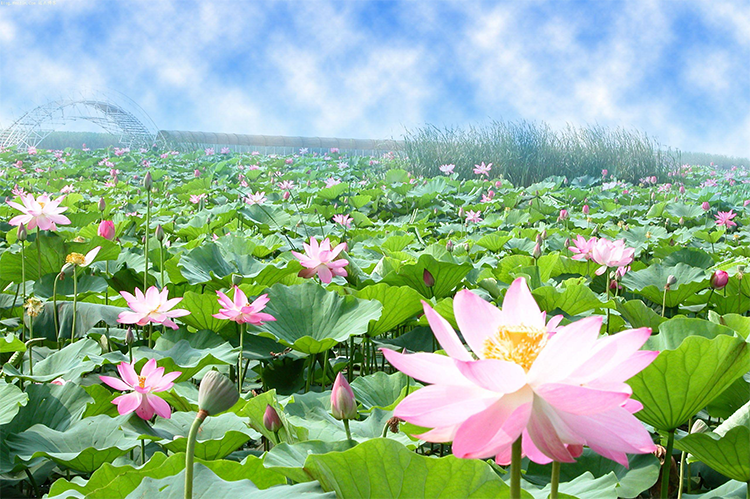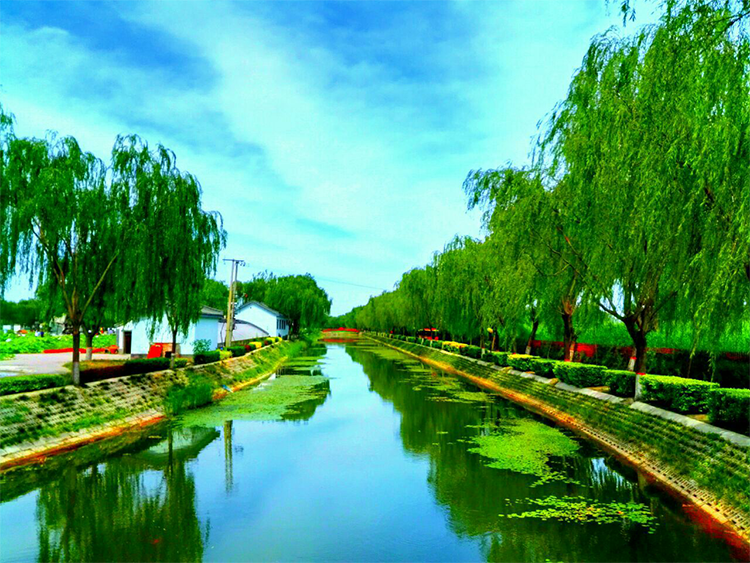Baiyangdian Boat Tours: Cruise China’s Northern Lotus Wetland
1. The Soul of a Northern Water Town
When the first morning light spills across 366 square kilometers of water, 143 lakes glitter like fragments of silver and more than 3,700 reed-choked channels wind between them — this is Baiyangdian, the largest freshwater wetland system in northern China. Nicknamed the ‘Pearl of North China’, this living ecosystem knits together waterside intimacy and wartime legend in a landscape where villages sit within lakes and lakes surround villages.
A national 5A scenic area and an ecological museum of sorts, Baiyangdian bears traces of human life back to the Neolithic. Song- and Liao-dynasty warboats once plied its channels, and during the Anti-Japanese War the Yanling guerrilla flotillas vanished into the reedbeds. In summer the lotus seas bloom into waves of pink; in winter the frozen surface becomes a natural playground. No matter the season, the wetlands thrumming with life never fail to astonish.
2. Millennia of History Echoing Across the Reeds
Baiyangdian’s human story stretches back some 7,000 years to the Cishan culture; stone axes and pottery unearthed here testify to ancient people who lived by the water. In the Northern Song era the wetlands functioned as a ‘water great wall’ against the Liao, and remnants of Yang Liulang’s fortified outposts still lurk deep in the reeds.
The most dramatic chapter, however, belongs to the Anti-Japanese War. The Yanling Squad — a feared waterborne guerrilla force — used the labyrinthine waterways to stage ambushes and then vanish among the reeds. Their wooden boats, homemade guns and swords are preserved in the Yanling Squad Memorial Hall inside the park; plan about two hours to visit this red tourism site. Through yellowed photographs and original relics you can almost touch the hard, improvised life summarized by the phrase ‘lotus leaves as blankets, reedbeds as beds.’

3. A Natural Theater with Four-Season Attractions
Summer (June–August) is Baiyangdian’s golden season. Glide on a wooden boat through the vast lotus gardens and feel like you’re inside a Monet painting: more than 200 lotus varieties compete in bloom, dew beading on pink and white petals while green seed pods sway. Boatwomen will teach you how to spot varieties such as ‘Chongtailian’ and the thousand-petal lotus; lucky visitors might watch little terns nesting among the reeds.
When autumn arrives, the reedbeds turn into a golden sea. Speedboats race through maze-like channels, flushing up egrets and wild ducks — a favorite scene for pro photographers seeking the classic ‘sunset and solitary birds’ shot. In winter Baiyangdian becomes an ice-sports park: with ice up to 30 cm thick you can try dog sledding or ice fishing. Local ice-fishing techniques — cutting holes and hauling fish by hand — are a unique cultural spectacle.

4. Immersive Waterside Experiences
To truly understand Baiyangdian, allow two days and one night. Start early from Baoding (roughly a 1.5-hour drive) and visit Wangjiazai Folk Village to learn traditional reed-mat weaving from local fishermen. In the afternoon take a boat to the Great Lotus Viewing Garden; on the viewing tower taste a full-lotus banquet made with fresh seed pods — lotus leaf-wrapped meat and braised fish with lotus root are local highlights.
On day two, don’t miss a pre-dawn boat for sunrise. Leave with fishermen at 5:00 am to watch the wetlands turn gold and crimson as mist lifts; in quiet moments you may hear carp breaking the surface with soft splashes. The park offers Chinese and English audio guides, but booking a local guide is recommended — they can show you wartime hidden entrances and tell colorful anecdotes, including tales of Emperor Qianlong’s three visits to Baiyangdian.
5. Practical Travel Tips
– Transportation: Take high-speed train from Beijing West to Baiyangdian Station (about 40 minutes), then a park shuttle; by car, navigate to ‘Baiyangdian Tourist Wharf’ (parking fee approx. RMB 20/day).
– Tickets: A full pass is RMB 185 (includes boat fares to four main attractions). Students receive a 50% discount; book in advance via the ‘Leyou Baiyangdian’ mini-program.
– Accommodation: Stay in a fishermen’s homestay on the wetlands (around RMB 200/night, breakfast included) for a rustic experience with kang beds and frog-song nights. For more comfort, choose the Lotus Pond Hot Spring Hotel.
– Crowd tips: Weekends in July–August can see up to 20,000 visitors per day. For a quieter visit, come midweek or in September during the reed-flower season.
At dusk, when cooking smoke rises from waterside cottages and wild ducks cut across the sunset-lit surface, it’s easy to see why poets have called Baiyangdian the ‘Jiangnan of the North.’ This waterland carries ecological secrets and the resilient spirit of a people who learned to live with water. Pack your bag and paddle into the channels that connect past and future.


